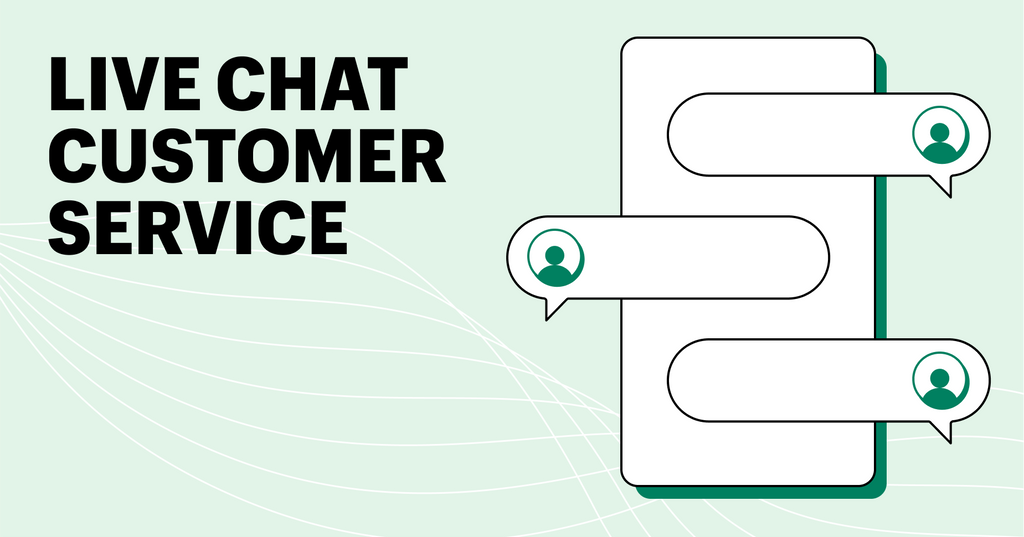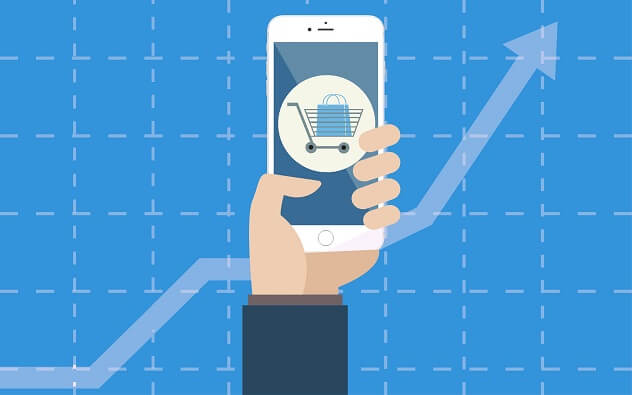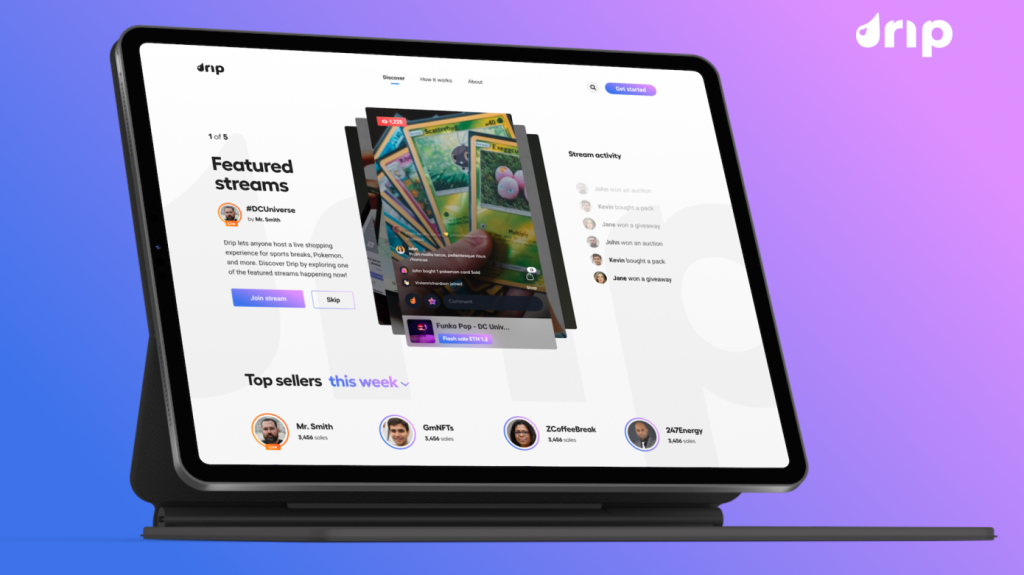Save Sales Live Chat Customer Service

In the early days of live chat, live chat was often thought of as impersonal responses to customer complaints or an endless time suck for teams that couldn’t spare the firepower to make it effective.
Thankfully live chat has grown up, and is now an incredibly powerful way to improve your customer experience and provide real-time support to your customers.
The idea that live chat can only be used for supporting customers who had something go wrong is a narrow one. Instead, think of live chat as a way to support customers through all stages of the buying cycle.
That means pre-purchase and during, not just after. Live chat is an incredible tool to improve the customer experience when done correctly. The data is clear.
📊 Live chat’s true strength is as a conversion tool—and research backs this up:
- Shopify’s data shows businesses that respond to a customer’s chat within five minutes are 69% more likely to get a sale.
- Shoppers who chat with businesses via Shopify Ping are 70% more likely to convert.
- Forrester reports that shoppers who chat with a brand not only convert three times as often, but their average cart value is 10%–15% higher than other shoppers.
In this article we will explore how you can use live chat support effectively and ultimately improve your customer’s experience.
Why your customer service teams should use live chat

At the most basic level, live chats allow you to provide uber-personalized recommendations that can speak to a shopper’s actual space, lifestyle, and preferences, which removes that invisible barrier of trust and decision fatigue. It’s why 41% of customers feel live chat is the best way to communicate with a business.
Furthermore, live chat gives your customer service team unique insights into the pain points and challenges your customers face. Over time, your team can start noticing patterns and use that information to better your product, service, marketing, and even sales.
Catch prospective customers as they’re contemplating a purchase
When you send marketing emails, pay for ads, or even post a billboard, you’re often interrupting people during moments where they’re not thinking about shopping or in the mood to make a purchase. A well-placed bus ad is great for grabbing attention until the person remembers to look you up hours later but has forgotten the name of your business.
With a live chat app is you essentially have a contextual marketing method.
This means prospective customers have shown the intent to purchase something on your site: they’re already present and browsing.
Catch them in the midst of their decision making process and send a proactive message letting them know you’re available to chat immediately. Now, instead of closing the tab or minimizing it until they have time to consider their options, they can ask you any outstanding questions–that’s the incredible power of live chat.
For example, you could write into the Heatonist Sauce Sommeliers and ask what the best hot sauce to use for stir fry or on burrito night is, and they’ll get back to you in real time with personalized recommendations they’ve tested themselves.
There’s something about knowing you have a knowledgeable customer service rep standing by to help you with your purchase.
Increase conversion: let shoppers talk with you in real time
Our analysis of Shopify Ping’s usage shows businesses that respond to a customer’s chat within five minutes are 69% more likely to get a sale from the shopper. Read: prospective customers want your undivided attention when they’re considering making a purchase from you.
Brands that respond to a customer’s chat within five minutes are 69% more likely to get a sale.
This gets back to the idea of trust. Shoppers feel more confident in brands that are easy to get a hold of. And if they know they can live chat with on your time (not yours), they’ll know they can get in contact should anything go wrong. Not every potential user will use live chat of course, but having it as an option can improve your customer experience in just a few clicks.
Just as you don’t always need a physical rep following you around the store to answer any questions, it’s always nice to know you can lean on them if you do have a question or concern.
Customer service teams using live chat can improve customer engagement
Engaged customers are people who feel a connection to a business, whether it’s because they love the products, the branding, or the mission and values of the company. Having a productive and positive conversation with someone at your company will help shoppers feel more connected to you.
You don’t have to go as far as Zappos does, but allowing shoppers to chat with you through a simple chat window, can make the entire exchange feel way more similar to the fun and immersive in-store experiences of old. That means you can build relationships with businesses just like you would get to know the baristas of your favorite coffee (or tea) place.
🎯 Key takeaways
- Live chat is unique because it offers businesses the chance to connect with shoppers right as they’re considering a purchase. That means they’re able to answer any questions that might block someone from checking out.
- Our data shows quick responses can help increase the chance you’ll turn a shopper into a customer by 69%.
- Don’t underestimate the value of a personal connection. 1:1 conversations can engage customers and help them feel excited about shopping with you.
How Planet Nusa uses live chat to increase conversion and build community
Planet Nusa is an activewear company that makes planet-friendly workout gear from sustainable materials like recycled fish nets pulled out of the ocean. It’s using Shopify Chat and Shopify Ping for live chat on its online store to recreate the brick-and-mortar experience.
We chatted with co-founder Mille Skat to learn more about how Planet Nusa uses live chat to both increase sales and a sense of community among its customers.
“It should be easy and fun getting activewear. Shopify Ping has been our greatest tool for that.”

Live chat removes size ambiguity, which leads to more sales
Planet Nusa found that answering the questions its consumers have allows it to transfer those answers into direct sales. That’s especially important for online retail, where customers don’t get a fitting room to try on the clothes they want to buy—unless they purchase them.
“There’s still no perfect solution to size conversion online—especially when you sell to customers with various local sizing,” Mille says. “The traditional measurement charts where the customer needs to measure herself at home just isn’t something we want them to have to do! It should be easy and fun getting activewear.”
“Shopify Ping has been our greatest tool for that. When questions arise about sizing, we’re able to advise them on choosing the sizes they already have in their closet or send links to our social media profiles and openly say, ‘I’m a standard size medium in my regular clothing and I have that in our T1 Power Leggings. Here’s my Instagram if you want to check out the sizing. 💕’”
Removing ambiguity about your product is useful even if you sell products outside of the retail space. You can apply this thinking to anything: customers might want to know how big a table is, what the color of a velvet pillow looks like in natural light, or the weight of a drinking glass. You can answer all of those questions immediately through live chat.
Live chat builds rapport, which leads to a sense of community
What really drives Planet Nusa is the ability to use live chat to make customers feel included in the global community they’re creating. “We’re finding that our customers want to be heard, and why shouldn’t they? We’re making a great deal out of communicating with them on all platforms, and so live chat is a natural must-have,” Mille says.
Planet Nusa is using its multi-channel presence to create an online community for its customers that goes beyond a good shopping experience. Its goal is to foster a sense of empowerment and inclusion for women across the globe through sustainable clothing and connection. Live chat helps them accomplish that. As Mille says, “The best thing about talking to your customers in real time is that they get to feel part of the community we’re trying to build, both online and offline.”
“The best thing about talking to your customers in real time is that they get to feel part of the community we’re trying to build, both online and offline.”
The conversations the Planet Nusa team has with its worldwide customers span from styling advice to their favorite reality shows. And that personal connection they’re able to create leads to a really stellar, special experience for those customers, which also increases customer lifetime value. In Mille’s words, “The most important thing is that they’ve had a good experience on our site and hopefully feel even more included in our community.”
Live chat 101: 9 keys to a great live chat strategy

1. Know your inventory better than anyone
Whoever handles live chat on your team needs to know enough about each product you sell so they can recommend the one that will be perfect for a customer’s cousin’s girlfriend’s cat’s birthday party. This also means understanding what your best selling products are so you can use that information to upsell or cross-sell. The point isn’t to just have them push your products or services, but rather support your customers and potential customers wherever they are in their buyers journey.
2. Consider video chat support
While definitely not for everyone business or customer for that matter, you may benefit from using video chat support. In SaaS for example, it may be beneficial to be able to have someone on your team jump on a call and share their screen to walk through specific features.
While video chat support does require a little bit more of a time investment and resources, it’s something to consider when building out your chat process.
Just as some prefer phone support over email, some customers may enjoy having a video chat option. Logistically this may not always be possible, but listening to your customers will lead you in the right direction.
3. Offer thoughtful recommendations
Throughout your ongoing chat, have your team ask a few contextual followup questions to ensure they have enough information about what the customer is looking for. This allows your service reps to provide personalized recommendations and speak to their needs, not the needs of a one size-fit all persona.
4. Keep chats organized
It can be daunting to have live chat set up if you don’t have a good way to organize incoming conversations. A tool like Shopify Ping will organize all of the chats for you so you can respond in real time. Ping allows you to see conversations with both your team and your shoppers in one place, letting you collaborate to get customers what they need. Whatever tool you pick, make sure you stay organized from the start to ensure you’re able to see common themes and patterns that come up during your conversations.
Build stronger relationships with Shopify Ping
Shopify Ping connects to the messaging apps you already use to bring all your conversations into a single mobile location, making it easier to respond to questions and build relationships with customers—even when you’re on the go.
5. Gleam insights from your chat conversation
There’s a reason why so many businesses record phone support calls. You’ve likely heard the classic “This call is being recorded for training and quality purposes” when on the phone with a customer service rep for example.
The same can be said about your chat conversations.Make a habit of having your support team review their conversations on a monthly basis to see the most common themes and patterns.
Are customers frequently asking about shipping costs? Perhaps you can create a blog post or make your shipping costs more visible. Are customer’s asking about a certain feature you don’t have? This could be a good opportunity to loop in your product team to see if it’s something to add to the product road map.
Using your chat conversations for insights can lead to improved customer satisfaction, marketing, and even sales! Your customer service reps truly can be the source of the most valuable insights for your business.
6. Stay personable
Unless using a bot to triage live chat requests is part of your strategy, customers expect to get a human on the other end of the line. Your chat should feel like a great in-store experience, similar to a conversation with your favorite coffee shop barista. Don’t be afraid to share your personal favorite products and why you love them. Your shoppers will appreciate that you’ve tried (and love) all of your products yourself.
Honesty should always be your policy when you can’t be online, too. For example, when the Planet Nusa team miss a conversation or reply a little late, they explain to customers, “We’re a small brand, and we were just headed home on our bikes. But we’re back and would love to help you out. 💕”
Sharing that level of detail—that they were biking home—gives customers a level of insight into how the team operates. And it’s also a lovely tidbit of information that makes the brand feel more personal and real, rather than just a logo on a website.
7. Set your customer support team up for success
Of course, you can’t expect to invest in customer service software and call it a day. Providing a great customer service experience is a team effort. Your chat support team needs to understand your brands values and processes to do their best on the job.
Is your ideal customer experience clear? Do your customer service reps know exactly how to handle a variety of customer service experiences? Without setting your team up for support, you risk turning live chat into something that decreases customer satisfaction rather than helping your business grow.
8. Make sure your live chat support option is easy to find
Don’t limit access to live chat to your Contact Us page. Your live chat messenger should be visible on every product page, so long as it’s not constantly interrupting your shoppers while they’re browsing. For example, Shopify Chat and Apple Business Chat are made available on every page of a business’s online store up until checkout.
If a customer spends a while on a given page, consider adding in an automated, proactive pop-up to see if they need help.
9. Use your your live chat software as a customer feedback loop
Chat support is a great opportunity to conduct unofficial user testing. Where are customers consistently getting stuck?
The pre-sale questions someone asks over live chat can be used to fix the root cause of an issue that may be preventing other potential customers from making a purchase, e.g., an unclear product page.
If you do find that customers are getting stuck, the best thing you can do is ask them pointed questions so you know how to help them and how to fix the issue for other visitors to your site.
🎯 Key takeaways
- Know your inventory and bestselling products like you know your Chipotle order so you can give better recommendations.
- Make it easy for customers to find your live chat messenger so they’re aware that they can talk to you in real time.
- Keep it personal! Prospective customers enjoy hearing about the products you love most and why.
Actionable tasks: how to get started now
How to set up Shopify Ping and Chat
Getting started with a live chat tool is a pretty quick process. First, decide on a tool for live chat. Shopify Chat, Apple Business Chat, Heyday, and Facebook Messenger are all popular options, and all of them integrate with Shopify Ping.
Then, you’ll need to set up Shopify Ping. All you need to do is download the Shopify Ping mobile app and log in to your Shopify account. Or, if working on a desktop is your jam, just visit shopifyping.com and do the same.
Shopify Chat is free and will integrate seamlessly with your store and Shopify Ping. Here’s how to get it set up:
Figure out what hours you and your staff can be online
Whatever hours you decide on, make sure you communicate it clearly. Just remember: online shoppers don’t necessarily browse during retail store opening hours, so you should aim to be online in the mornings and evenings if that’s possible for you. If you miss a chat (it happens!), just make sure you follow up with the customer next time you’re online so they feel heard and get the help they need.
Create templated replies
Templated replies are prewritten replies to commonly asked questions. They’re great tools because they act as a jumping-off point for you and your team. They’re also a huge timesaver when you have multiple chats coming in at once. Take a look at your frequently asked questions that can’t be answered on an FAQ page. This could be things like “Why hasn’t my order shipped yet?” or “When will you get more of this item in stock?”
How to measure success and see if live chat is really working

Figure out what your customers respond to
Chances are, some of your live chat conversations will culminate in a sale, while others won’t. And while that could be entirely dependent on elements outside your control, what you can look at is what language, tone, response time, and recommendations have gotten a customer to convert.
Do you see any trends? Take notes and implement those practices into future conversations. This type of observation will give you a solid idea of how you’re doing and if your live chat offering is performing at its full potential.
Live chat metrics to measure
When you report on how your live chat offering performs, here are a few metrics to look at:
- Average chat length
- The time it takes customers who chat to purchase
- How many chats you get per day
- Customer engagement: how often are your customers or potential customers engaging with your live chat options?
- Percentage of customers you chat with versus how many of those customers make a purchase
- Overall customer satisfaction
While there are a variety of live chat tools that can help you keep track of important metrics, Shopify Ping has you covered.
Live chat is a strong addition to your business
Like providing an amazing in-store shopping experience, live chat is what builds the foundation of trust between your customers and your business. When done correctly, it can super charge your customer satisfaction and ultimately your customer experience.
Though paid ads, email marketing, and other acquisition efforts can drive traffic, converting that traffic into sales relies on a customer’s confidence in your brand and in the products you sell.
Live chat is the window into building stronger connections with your prospective customers—just as conversation builds trust between two new friends. It may take some time to master, but for many businesses the effort is well worth the reward.






Responses